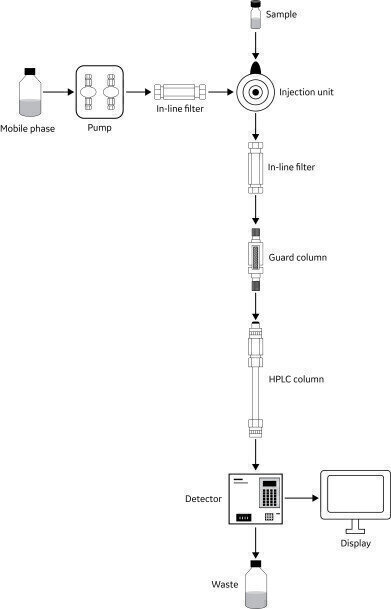Environmental Laboratory
Prolong your HPLC column’s lifetime and improve data quality by making simple changes to your HPLC sample preparation procedures
Jun 14 2017
HPLC columns are central equipment in many laboratories, protecting them from damage is a prime consideration. Extending column lifetime can save time and costs in a busy laboratory. A well-maintained column also produces consistent and accurate data, supporting confident analyses.
How can I prolong column lifetime?
- Sample preparation
Prefiltering samples prior to injection onto the column can help to limit the addition of particulates to the system. A syringe filter or syringeless filter vials suitable for this step, depending on the sample type, number of samples, and sample injection method.
Centrifuging the sample with or without filtration also helps to reduce the number of particulates. Particles that might otherwise make it into the system and onto the column collect at the bottom of the centrifuge vial. - Mobile phase
The mobile phase is another factor that influences column lifetime.
Filtering and degassing the mobile phase will remove particulates and air, ensuring they do not reach and damage the column. Filtration is especially important if the mobile phase contains buffer salts or modifiers from dissolved solid material.
Also, it can be useful to consider the compatibility of a sample with the mobile phase, because some sample components are reactive with particular HPLC solvents. - In-line filters and guard columns
In-line filters and guard columns help prevent particulates entering the system and the column. The use of these column protectors depends on the application, with either one, or both, required.
A guard column is a short column that the sample and mobile phase pass through before entering the main column, helping to protect against damage by adsorbing particulates. The use of a guard column depends on the specific application, because it can be an expensive protection option requiring consideration of the costs against benefits. - Maintenance
Maintaining a clean column is another way to extend a column’s lifetime. Occasionally flushing the column with mobile phases that differ from those used on the system (e.g., more water or organics) can help to clean the column. Extensive flushing in a backwards direction can also help with cleaning, especially if you notice increasing column back pressure.
Storing columns in an appropriate solvent can help prolong their life. If a column is stored for long intervals (e.g., over two days), consult the column’s handling instructions to identify the best storage solvent for that particular column.
Request a sample GD/X filter now or use our Whatman Filter Selector App to see what would fit best for your filtration needs.
Digital Edition
IET 34.2 March 2024
April 2024
Gas Detection - Biogas batch fermentation system for laboratory use with automatic gas analysis in real time Water/Wastewater - Upcycling sensors for sustainable nature management - Prist...
View all digital editions
Events
Apr 22 2024 Hannover, Germany
Apr 22 2024 Marrakech, Morroco
Apr 23 2024 Kuala Lumpur, Malaysia
Apr 23 2024 Kintex, South Korea
Apr 23 2024 Edmonton, AB, Canada


















